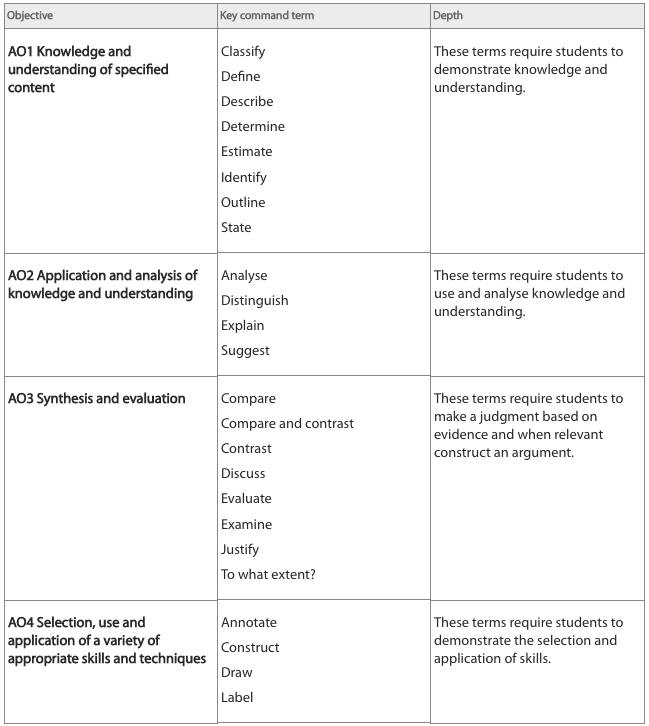Assessment Command Terms
Command terms are classified according to the assessment objectives of:
Although command terms are not used explicitly in the syllabus, students must be familiar with them to understand the depth of treatment required in examination questions. The allocation of marks in examination question markbands also reflects this classification of the assessment objectives.
There is a progression in demand from AO1 to AO3, while AO4 terms are specific to particular skills and examination questions. Definitions of these command terms are listed in the appendix. The command terms within each classification are listed in alphabetical order in the following table.
- AO1 Knowledge and understanding of specified content
- AO2 Application and analysis of knowledge and understanding
- AO3 Synthesis and evaluation
- AO4 Selection, use and application of a variety of appropriate skills and techniques.
Although command terms are not used explicitly in the syllabus, students must be familiar with them to understand the depth of treatment required in examination questions. The allocation of marks in examination question markbands also reflects this classification of the assessment objectives.
There is a progression in demand from AO1 to AO3, while AO4 terms are specific to particular skills and examination questions. Definitions of these command terms are listed in the appendix. The command terms within each classification are listed in alphabetical order in the following table.
Command terms summary: Command terms meaning & examples
Command terms detailed breakdown: Command terms primer

